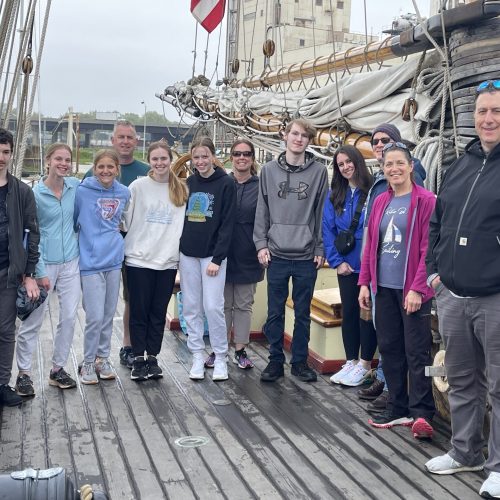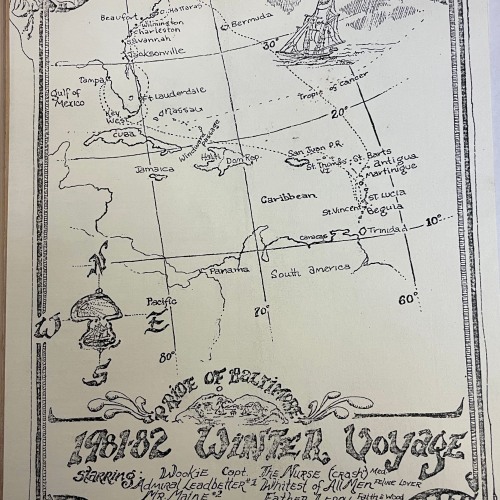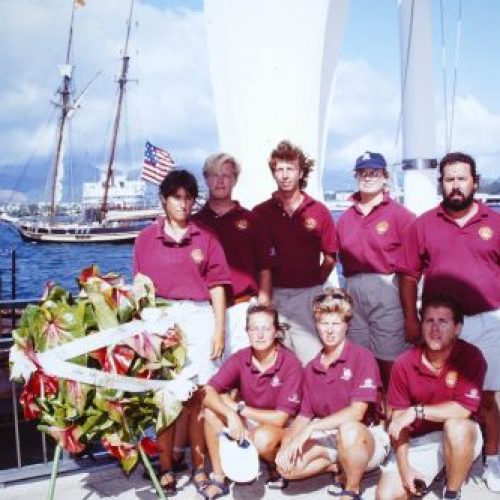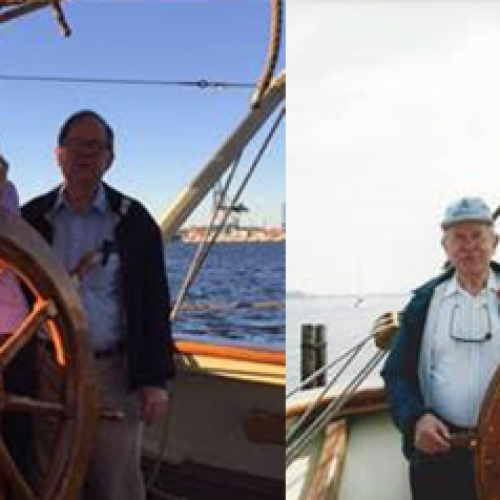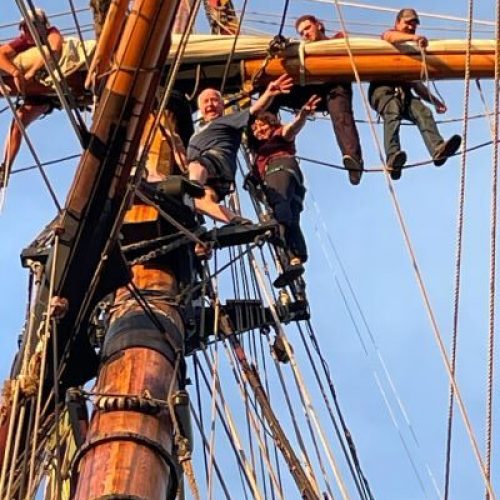Thursday 28 June 2012
Pos: 42 36.2’N X 070 40.1’W
Wx: ESE F 2, Seas Calm
Pride of Baltimore II at Anchor in “Western Harbor” off Gloucester, Massachusetts Nm from Baltimore: 550, Nm Sailed: 465, Average Speed Sailing: 7.8 knots.
Pride of Baltimore II has overshot Boston and is ahead of schedule. With increasingly favorable conditions yesterday, carried all plain sail and, in anticipation of the upcoming round of Tall Ships Challenge Races, did some training with our Stuns’l. This sail, properly called a “Studding Sail” expands the sail area of the Fore Tops’l out to the weather, or windward side. For those versed in modern sailing, think of it as a square spinnaker, set 85 feet above the deck. And instead of 1.5 oz nylon cloth, it’s made of real Egyptian cotton with a higher thread count than most five-star hotel sheets. Not surprisingly, while we sail hard under it, the crew is instructed that any mishandling of the delicate cloth is to be done “at their peril.”
Like a spinnaker, the stuns’l can only be carried with the wind behind, or abaft, the beam. Yesterday, the westerly backing breeze of the sun washed afternoon gave us perfect opportunity to carry it. As it’s only been set once so far this season, we called up all hands for the training. First step is setting up – because of the natural cotton cloth, the stuns’l is stowed below decks, in a protective canvas bag tucked between deck beams. While some hands negotiate the sail and the 12 foot head stick it’s lashed to out from below, the stuns’l boom – akin to a spinnaker pole – must be run out to windward from its stowed position on the fore yards. But no simple topping lift and mast ring to clip to here, this maneuver is done aloft, and requires two crew to slide the 25 foot spar out through a supporting iron at the yardarm, then lash the inboard end down to the yard. The tack is sent down to deck with one end running forward to attach to the outboard corner sail (the tack) and the other end aft to act as a guy to keep the stuns’l boom from bending forward or breaking. The sheet ties to the inboard corner (the clew). Once the sail is on deck, the halyard is tied to the headstick and the whole thing flies up like a 378 square foot kite.
Because stuns’ls are usually reserved for the most ideal sailing conditions, it is relatively common to wish some one a “stuns’l passage.”
In our case yesterday, said passage only lasted a few hours, when gathering clouds and converging shorelines had us take it in as we approached the Cape Cod Canal. This Canal, the second in Pride II’s passage to Boston, connects the waters of Buzzards Bay and Cape Cod Bay, knocking some 80 nautical miles off the trip, but creating a spectacular timing issue. These waters see tides in excess of 9 feet and with so much water moving through a man made cut, the current normally exceeds 4 knots: Miserable to fight against, a more than a little nerve-wracking to surf through a narrow, rocky cut.
As luck had it, though, we timed our arrival to the very start of the flood. The breeze faded, so far inshore, but Canal Control insists on vessels using auxiliary power anyway. With nearly everything still set, Pride II made short work of motorsailing the ten mile trip, which meant sails were set and ready for the waters of Cape Cod and Massachusetts Bays. Sailing the through the rest of the night, we tacked four times off of Cape Ann, for drill again, giving all three mates a crack at taking the ship through stays and putting Pride II on Starboard tack for all of an hour this trip before sailing to anchor off Gloucester, guns blazing.
All best,
Captain Jamie Trost and the cooling their heels crew of Pride of Baltimore II

